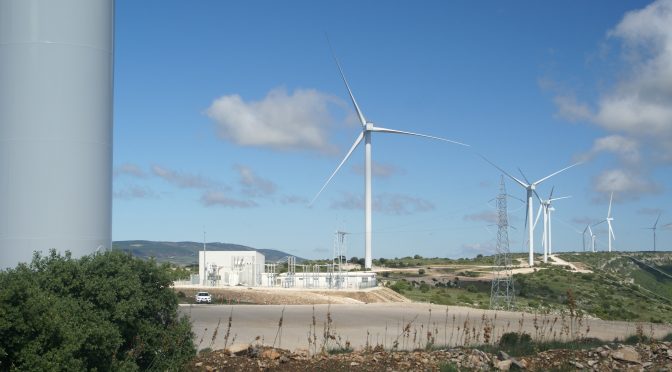The projects spread over Aragón, Andalusia, Extremadura, Castilla-La Mancha and the Balearic Islands represent an annual production of 911 GWh, will avoid the emission into the atmosphere of more than 424,228 tons of CO2 per year, and have involved an investment of more than 320 million of euros.
Quite a challenge, which has generated an estimated average of more than 1,500 direct jobs in construction work in the areas and in which the joint efforts made with industrial partners and contractors to work have been key, always under strict safety protocols on the Covid-19 scenario.
Within the Creation of Shared Value (CSV) programs for each of the 12 plants, training in plant operation and assembly has been given to 323 people in person in the parks environment, in collaboration with the municipal councils .
The projects undertaken include elements of innovation and sustainability to make the development of renewable energies compatible with agricultural activity. In addition, sustainable engineering practices have been followed during its construction.
All this represents a firm step of growth, in a year very complicated by the Covid-19 context, towards the objective that the company has set itself to replace its thermal generation capacity with renewable energy before the closure of up to 4,800 MW of coal production between 2019 and 2023.
Endesa continues to advance in its commitment to the growth of its zero-emission generation park within its Energy Transition Strategy. Through its subsidiary Enel Green Power Spain, it has managed to complete construction and connect 389 MW to the grid in 2020.
This new capacity is distributed in 12 projects, 6 solar and 6 wind, which represented a total investment of more than 320 million euros. All of them have been built in record time, taking into account the stoppage that occurred in Spain in business activity after the decree of the State of Alarm due to the Covid-19 pandemic between March and June. The projects spread over Aragon, Andalusia, Extremadura, Castilla-La Mancha and the Balearic Islands represent an annual production of 911 GWh and will prevent the emission into the atmosphere of more than 424,228 tons of CO2 per year.
Quite a challenge that has generated an estimated average of more than 1,500 direct jobs. In the construction work, the joint efforts made by industrial partners and contractors have been key. Both its staff and Endesa’s have followed strict security measures at all times in the construction of all plants. Due to the Covid-19 pandemic and in accordance with the indications of the health authorities, the company implemented rigorous security protocols in order to guarantee the necessary protection of the workers involved in the construction, as well as the communities in which plants are located.
“This is a firm step, in a very complicated year due to the Covid-19 scenario, towards the objective of replacing thermal generation capacity with renewable, after the closure of up to 4,800 MW of coal production between 2019 and 2023. Until now we have already connected 1,300 renewable MW (900 in 2019 and 400 MW in 2020) and we will build another 3,900 MW between 2021 and 2023 to add 5,200 MW between solar and wind plants ”, highlighted Rafael González, General Director of Generation at Endesa. Specifically, according to the Strategic Plan for the 2021-2023 period presented last November, Endesa has set a growth of 30% in its renewable energy park. A growth that will require an investment of 3,300 million (20% more than in the previous plan) to add 3,900 MW of renewable capacity. With this, 89% of the peninsular electricity production will be free of CO2 emissions by the end of 2023.
Innovation, Sustainable Construction and creation of value (CSV)
The photovoltaic and wind plants already connected to the grid have had the latest technology applied to their construction. Thus, Endesa is using virtual reality to review these facilities through Smart glasses, which allow remote assistance from supervisors without the need to physically move to the area of ??interest. In addition, this technology incorporates an infrared camera that offers a real-time view of construction and execution activities.
For the construction of all plants, both solar and wind, the company has followed sustainable engineering criteria and has applied Enel Green Power’s “Sustainable Construction Site” model, including the installation of photovoltaic solar panels to cover part of the energy needs during the work, efficient lighting, waste separation, and provision of several defibrillators to ensure the health of workers. Part of this equipment, now that the construction work has been completed, will be donated to the municipalities in which the 12 projects have been developed for public use.
Precisely, two of the actions (the installation of isolated photovoltaic equipment for the electricity consumption of the camps during the construction phase and the use of electric vehicles in some of the EGPE parks for the movement of those responsible for construction) have already been included as sustainable engineering actions within the Climate Projects 2018 by the Spanish Ministry for the Ecological Transition and the Demographic Challenge (MITERD).
Endesa’s philosophy when building its renewable facilities is part of its “Creation of Shared Value” (CSV) program that has led the company to carry out training courses in renewable matters, most of them unemployed, who have now with knowledge in the field of assembly and disassembly of installations and maintenance. Thus, during 2020, 12 CSV projects have been managed for each of the plants, with a total planned investment of around 700,000 euros.
Specifically, during this year, and despite the difficulties encountered with the pandemic, 323 people have been trained in person in the parks. Several editions of two courses have been held: “Operation and Maintenance of Parks” and “Assemblers of SFV Panels”, with 104 and 219 students respectively.


